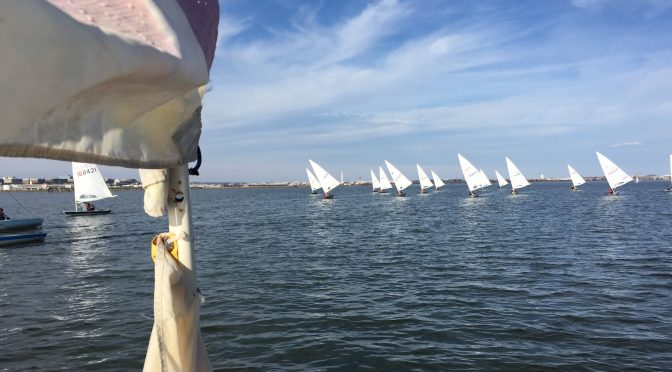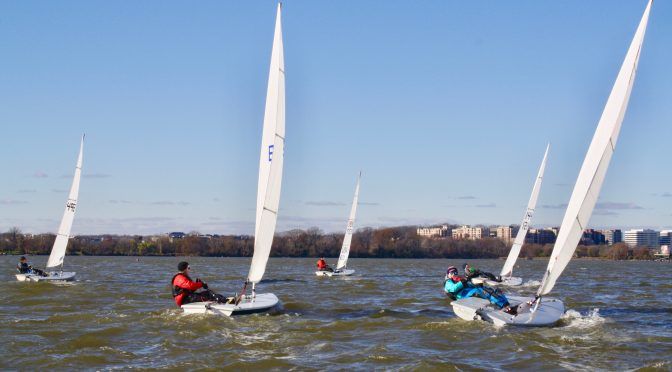Dear fellow frost biters,
December 20 proved yet another beautiful race day run by our two grownups, Jim and Jacob. Short up-down courses and a short starting line provided abundant thrills and excitement in the first few races. After a couple of general recalls, J&J released the pressure on us with a longer start line and an Olympic course that calmed the mark roundings. A big thanks to J&J for an excellent set of varied races!
A few Annapolis exiles joined us again bringing new blood and adding to the vibrant racing. Thanks to whoever invited them and a warm welcome to our visitors and newcomers.
It seems tradition to reflect on sail trim. Many of you already know I’m back on the water after more than a couple of decades as a landlubber, and my last few pre-landlubber years were in a 27 ft keelboat (h-boat) with very different trimming. I think I’ve done well because of starts and other factors, so with weak confidence to advice on Laser trim, here’s what I was working on in the light wind.
Downwind: no cunningham, outhaul provided for a deep sail curve by the boom. I trimmed the kicking strap to where there is just enough control of the leech/twist, and I sometimes tightened it during puffs. I’m still trying to figure out how to sheet relative to the wind – a vane is on my list to Santa.
Upwind: clearly the combination of sheeting and the kicker is the key, no kicker is always too little, and with more wind, more is needed, but I haven’t figured out the balance. I play with it a lot. I usually find myself sheeting more loosely than others. I use very little cunningham if at all, and the outhaul is trimmed with the sail ~4-5 inches from the boom and only marginal variation.
Starts: I felt I did very well starting on the port end of the line as close to the mark as possible. After the tide turned, I thought it was better to be farther east, where I think the current is stronger, but I’m not really sure. Especially after we got a bit more space on the start line, rather than waiting in a promising spot, keeping moving around with some boat speed before the start seemed to allow me to find a good spot and cross the line with some momentum.
All in all another great day in the series, and I look forward to more. Until then, my best wishes for the holidays!
Thanks to Farley, the race results are attached
All in all another great day in the series, and I look forward to more. Until then, best wishes for the holidays!


